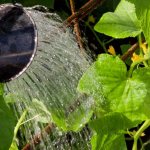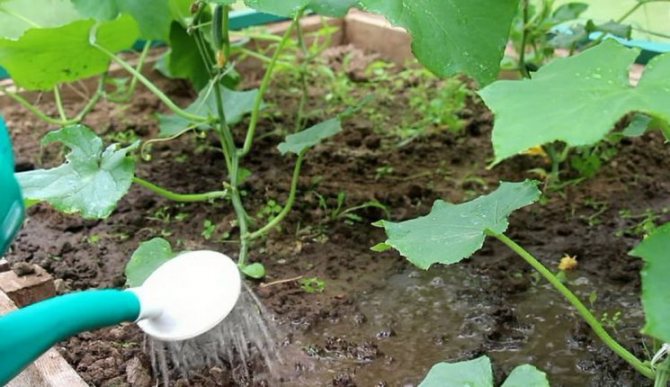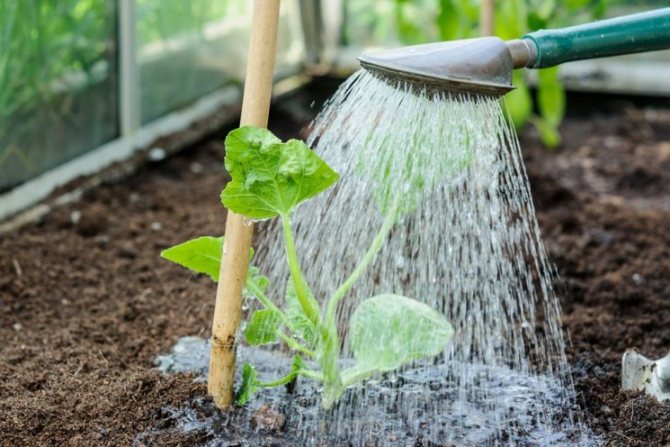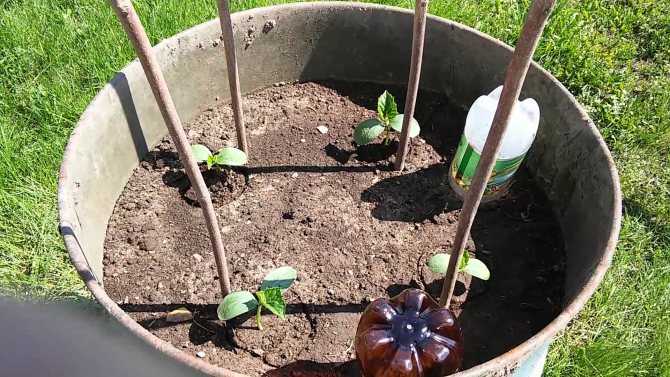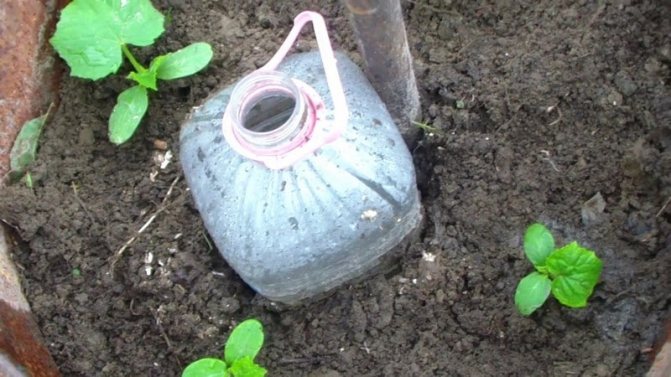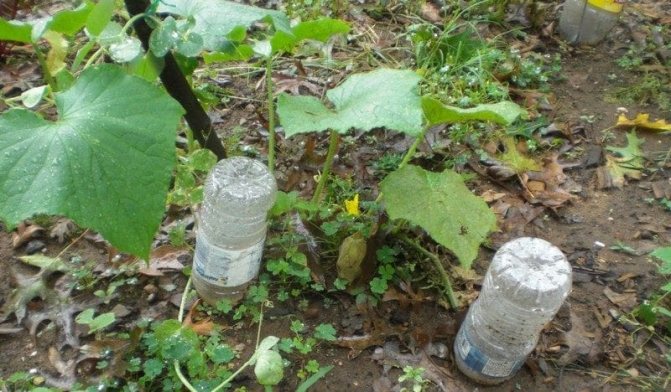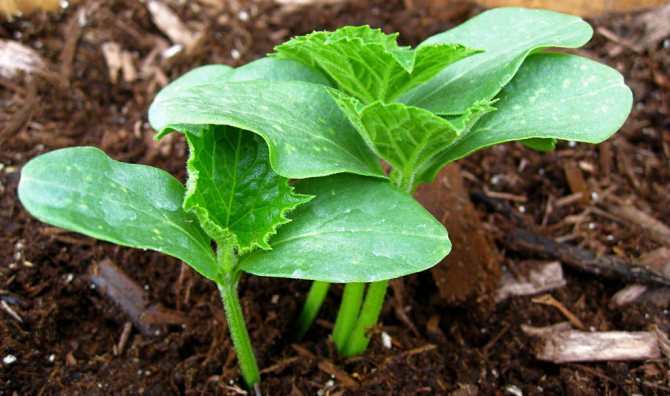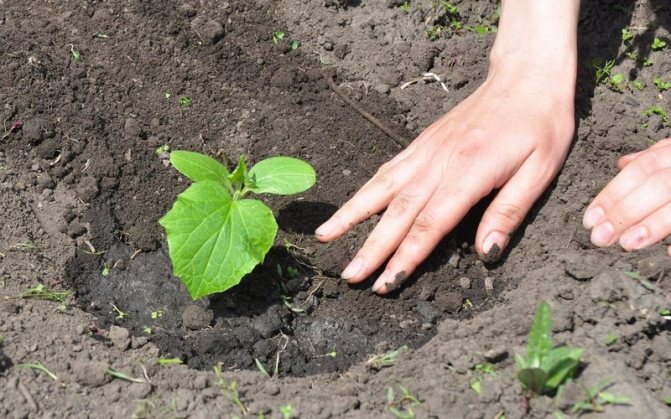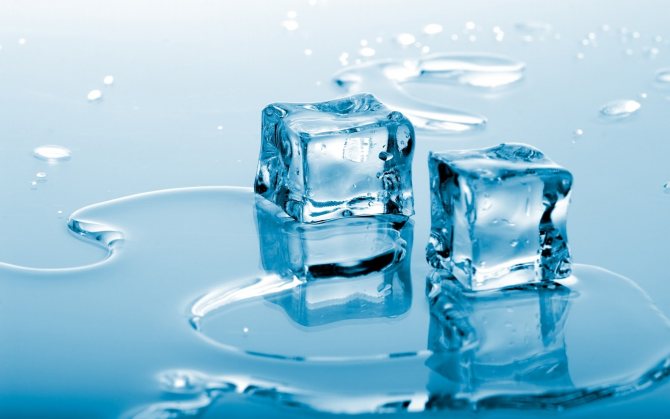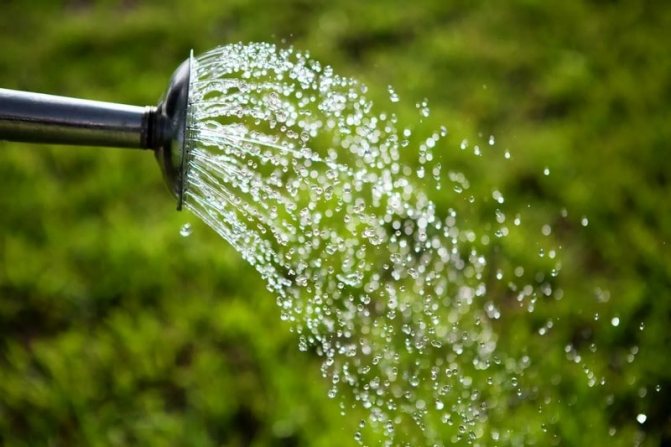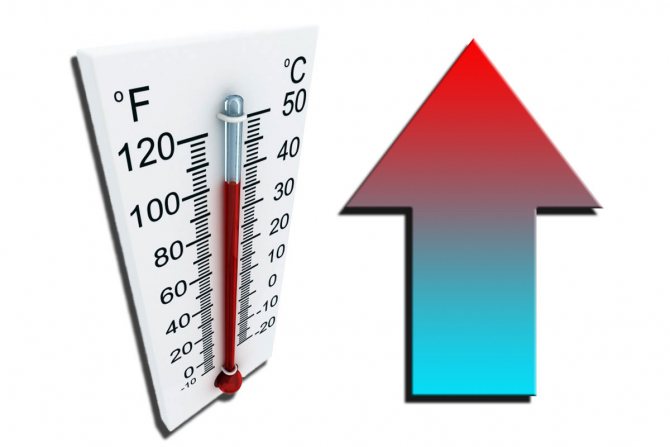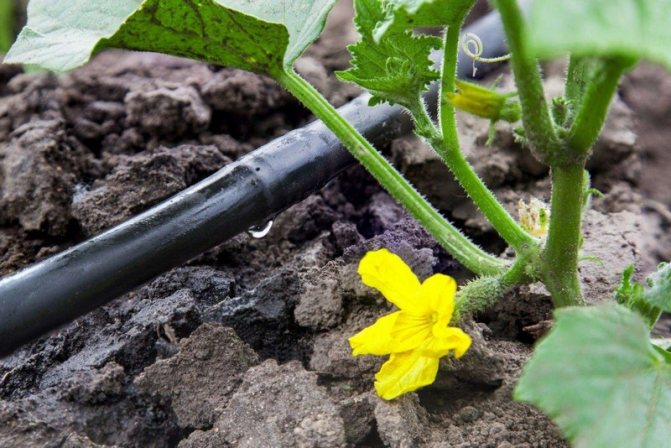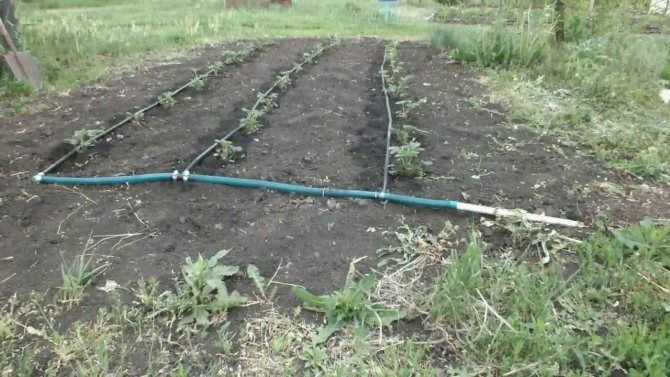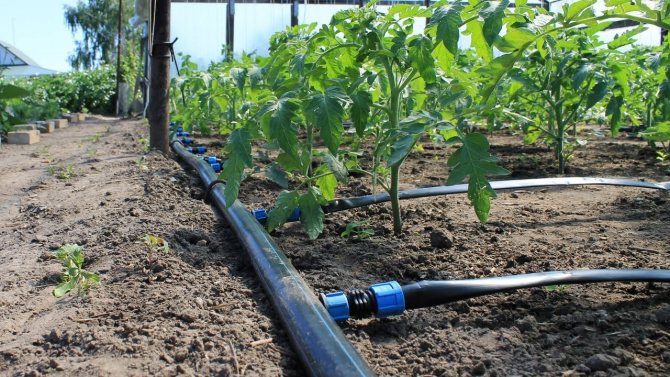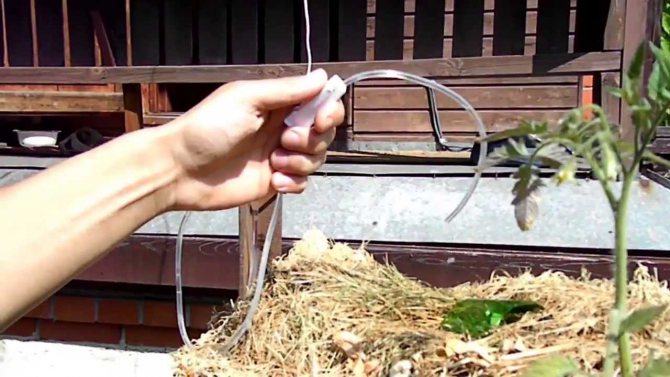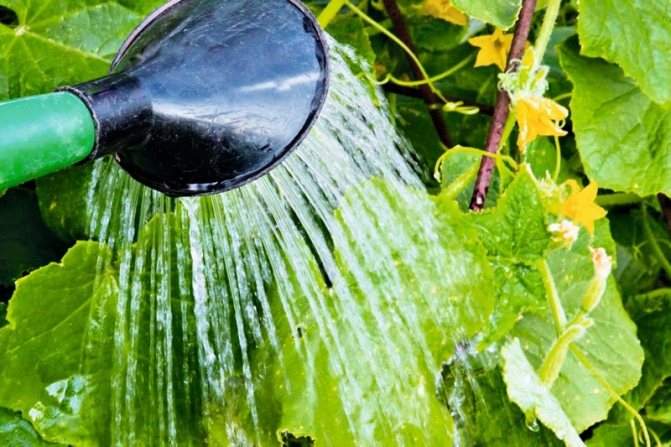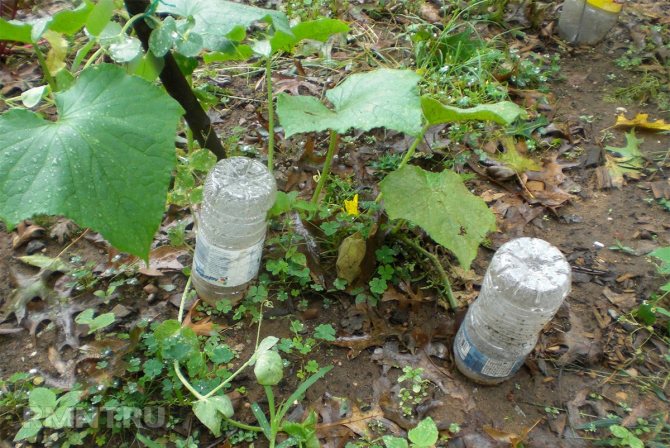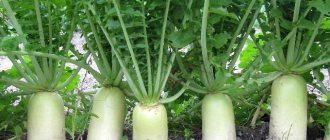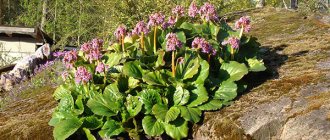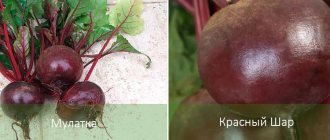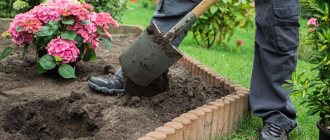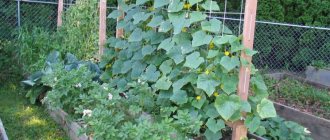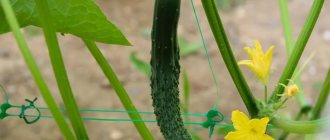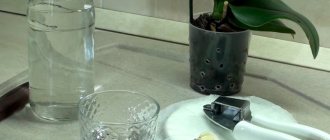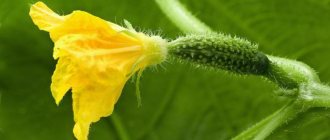Vegetable growing »Cucumbers
0
1016
Article rating
Growing cucumbers in a garden or greenhouse is easy if you organize the right care. Timely soil moisture will help strengthen plants and avoid bush diseases. How to water cucumbers: regularly, in a timely manner, and at an established rate. Such humidification is effective and economical in a continental climate: due to the shallow root system of the bush, water is poorly retained, and the earth dries up quickly. Regular irrigation is also important for greenhouses.
Watering rules for cucumbers
How to water cucumbers: frequency, time and rate
Cucumber belongs to tropical plants, likes high humidity and stable heat. As they develop and ripen, cucumbers require different watering. There is also a difference in irrigation when grown in open and protected ground. You should adhere to certain recommendations for watering:
- watering is not required immediately after planting seeds or planting seedlings;
- after 3-4 days the first watering is carried out;
- before flowering, watered depending on the drying out of the soil (once every 4–5 days);
- after the appearance of the ovaries - the most abundant watering (once every 2-3 days), and with the beginning of fruiting - every other day;
- the best watering time is early morning or evening, after sunset. Watering in the sun during the day can cause leaf burns;
- with the onset of rains and an increase in moisture in the soil, irrigation is stopped;
- open field irrigation rate is about 4–5 liters of water per m2 before flowering and 10–12 liters per square meter. meter during the formation of ovaries and during fruiting;
- greenhouses use more moderate irrigation - about four liters per sq. meter;
- in the period of long heat, sprinkling is used - watering plant leaves from a watering can (4–5 liters per square meter). At the same time, the water rate is reduced by 2–3 times.
When watering cucumbers, like other horticultural crops, there is a "golden" rule: do not pour.
Video: how often to water cucumbers outdoors
Mineral fertilizers
The best fertilizer for cucumbers is, of course, manure. It is applied at 4-5 kg per square in case of planting on fertile soil and 6-7 kg if planting is carried out with a low humus content, that is, like sod-podzolic, sandy, sandy loam and gray forest. If you apply manure under autumn tillage, the result will be the best.
Humus or high-quality decomposed compost can be applied as fertilizer, but only when planting seeds in rows or in a hole, when it comes to planting seedlings.
Mineral fertilizers can also be used when feeding plants, but they must be applied carefully in small portions, since the root system of cucumbers is quite sensitive to the slightest changes in the soil composition, and an excess of any substances will almost immediately affect the growth and development of bushes and ovaries.
When the main plant feeding is done, 10g of urea, 20-30g of superphosphate, and 10-15g of potassium sulfate per square are taken. Fertilizers containing phosphorus and potassium are generally best applied in the fall, and those containing nitrogen when cultivating the land before sowing.
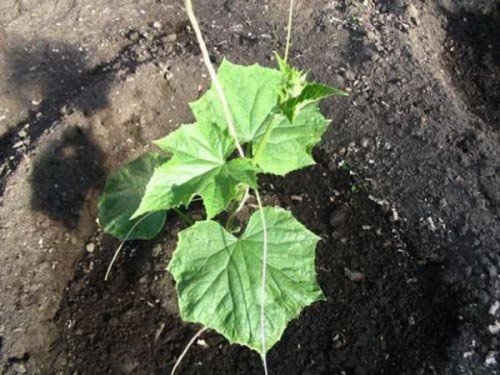
Wood ash is one of the best feeding options for cucumbers.
If we consider potash fertilizers, then it is better not to find furnace ash. It is brought in at the rate of 50-100g per square meter.It is good because it does not contain chlorine, which cucumbers do not like very much, and reduces the acidity of the soil. In addition, ash is time-tested, it has been used for a very long time. Of course, we are talking only about the combustion product of wood. No plastic and paintwork materials should be present here, only clean wood.
Temperature regime
When watering cucumbers, it is important to observe the temperature regime. Water temperature during irrigation should not be lower than ambient temperature.
Watering cucumbers in the open field should be with water heated to 18–20оС. When the air is heated above 30 degrees, so that there is not a large temperature difference, the water should be heated to 25 ° C. The best option is to use water heated by the sun and settled in various containers (barrels, vats, etc.).
In greenhouses, the water temperature is higher, about 20-25 degrees, and ideally should correspond to the soil temperature.
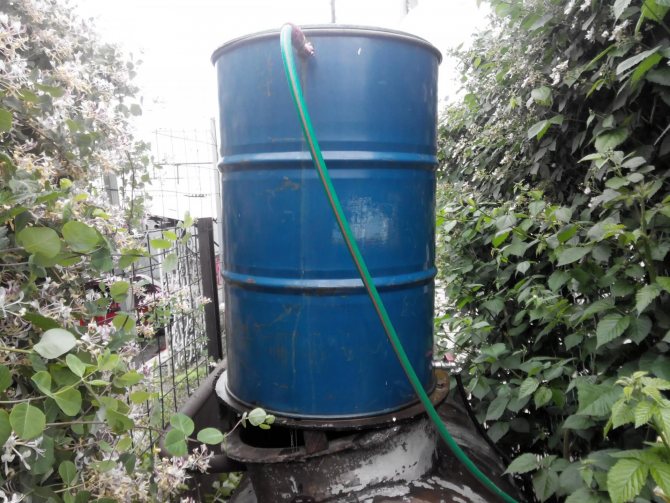

Barrels are used to heat water with the sun's rays.
Drip irrigation of cucumbers
Along with the traditional way of watering plants, gardeners have recently begun to widely use the drip system. When growing cucumbers, this irrigation method is the most optimal due to the fact that it automatically maintains the necessary moisture balance in the soil.
In industrial systems, droppers are applied to each plant to regulate the water balance. In order to control moisture, tensiometers are used, installed at the depth of the zone where the roots of cucumbers are located (15–20 cm from the soil surface). Such devices are expensive and many gardeners make homemade drip irrigation options from available tools. The simplest one is water supply by gravity from a tank installed on a high base through a PVC pipe 1–2 cm in diameter with outflow droppers from tubes 1–2 mm in diameter.
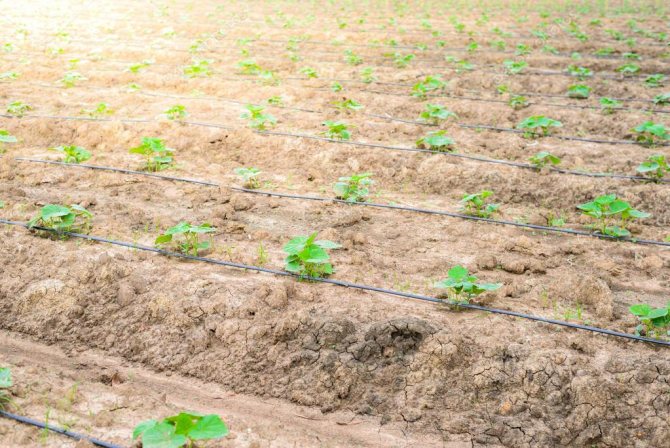

With drip irrigation, water is supplied to each plant
Drip irrigation for growing plants has the following advantages over conventional irrigation:
- supply of water and nutrients during watering and dressing directly to the roots of cucumbers;
- no earthen crust is formed;
- saving water and fertilizers due to timely regulation of the amount of feed;
- significant reduction in manual labor as a result of irrigation automation;
- no danger of soil erosion and leaching of soil from under the roots of plants;
- ease of use;
- significant increase in productivity.
The main disadvantage of drip irrigation systems is the clogging of the droppers. Therefore, in home-made devices, settled water should be used and a fine mesh filter should be installed in the system.
Water consumption for drip irrigation of cucumbers
Saving water is one of the positive factors of drip irrigation. Depending on the design of the system, soil type and weather conditions, the amount of water used can be reduced by up to 80% compared to other irrigation methods. This is achieved by the fact that only the roots of the cucumbers are irrigated and water is not wasted. Water in drip irrigation devices can be supplied depending on weather conditions, irrigation rates and the intensity of the drip device for 1-3 days.
Video: do-it-yourself drip irrigation system
What to water to protect against disease
To get rid of cucumbers from various diseases, you can use the following folk remedies: solutions of iodine and brilliant green, iodine and milk, soda, infusion of onion peels.
A solution of iodine and brilliant green
To get rid of root rot, cucumbers are watered with iodine and brilliant green:
- 1. Dissolve 10 drops of brilliant green in 10 liters of water and pour the cucumber plantings with the solution.
- 2. Dilute 10 ml of iodine in the same amount of water and spray the plants.
It is especially useful to use this method on marshy soils, since these preparations contain copper, which is useful for protecting and fertilizing cucumbers.
Iodine and milk solution
To rid the cucumbers of powdery mildew, they are poured with milk in combination with iodine:
- 1. 1 liter of low-fat milk is diluted in 9 liters of water.
- 2. Add 10 drops of iodine to this mixture.
- 3. The resulting product is poured over cucumbers.
Baking soda solution
Used to improve the condition of cucumbers and ordinary baking soda. If you dilute 1 tbsp in 10 liters of water. l. baking soda, you get an excellent remedy for preventing early yellowing of foliage. And if you use a concentration of 1 tsp. soda per 1 liter of water, then the solution is suitable for spraying cucumbers from powdery mildew.
Infusion of onion peel
To protect against diseases and as a fertilizer, it is useful to water the cucumbers with onion peel infusion. This broth is good because it is used both for watering and for spraying.
Preparation of the nutrient solution:
- 1. Pour 40 g of onion husks with 10 liters of warm water.
- 2. Leave to infuse for 4 days.
- 3. Strain the infusion and use for watering.
For feeding cucumbers, the selected tool can be used in two ways: directly water the plant under the root with it, or make a furrow along the row at a distance of 5–7 cm from the plants and pour the solution there. During the season, top dressing using folk methods is recommended 3-4 times.
Bottle watering
One of the types of drip irrigation can be called watering using plastic bottles. This is the most economical option for auto irrigation without the use of expensive materials and devices for uninterrupted irrigation.
There are several ways to bottle water.
The first way
For the irrigation device, you will need a one and a half or two liter plastic bottle and a used ballpoint pen rod, which will act as a dropper in the device. The rod is washed with solvent or gasoline to remove the residual paste and drown on one side with a toothpick, match, etc. A puncture is made 3-5 mm from the end using a sewing needle. The diameter of the puncture is determined empirically, however, a hole equal to half the diameter of the rod is considered optimal.
The bottle is set with a tightly closed neck in the ground or usually on the bottom. In the first version, the bottom of the bottle is cut off, the rod is installed in the hole located just above the shoulders. In the second case, a hole is made 15–20 cm from the bottom of the bottle, the rod is fixed, and the cap is removed. The containers are filled with water and placed near each bush.
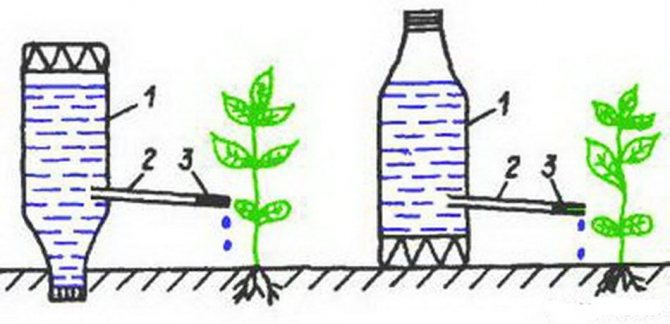

Watering scheme using a bottle and a rod. 1.Bottle. 2. rod. 3. Plug
Second way
In a bottle, stepping back from the bottom of 3-5 cm, holes are pierced to its entire height. They are placed in several rows, the number depends on the soil - the denser it is, the more holes. The optimal amount is determined empirically. If the soil is too damp, a bottle with a small number of holes is used; when the soil dries, it is changed to a bottle with a large number of holes. Bottles are buried to a depth of 10–20 cm between plants, bottom down. The plug is removed.
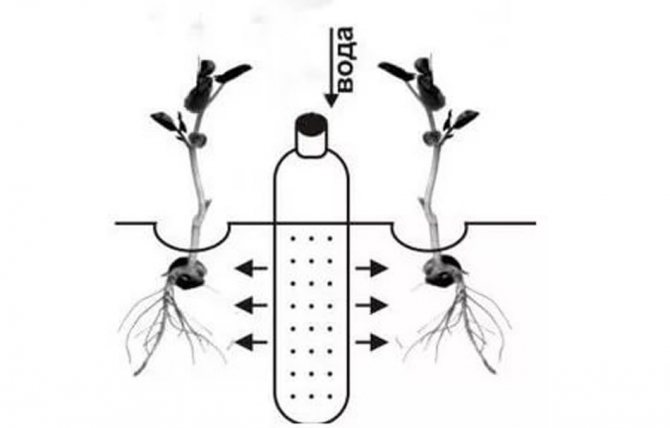

Bottles are buried between plant bushes
Third way
It resembles the previous one, but here the bottom is cut off. Punctures are made at the top of the bottle, closer to the throat. Screw on the lid and dig in with the neck down. To avoid rapid evaporation of moisture, cover the top of the bottle.
Fourth way
You can not place the bottles in the ground, but hang them over the bushes of plants. The holes, in this case, are pierced in the lid or just above the neck. The containers are filled with water and suspended from the installed supports. To avoid burns in sunny weather, the bottles are fixed as close to the ground as possible.
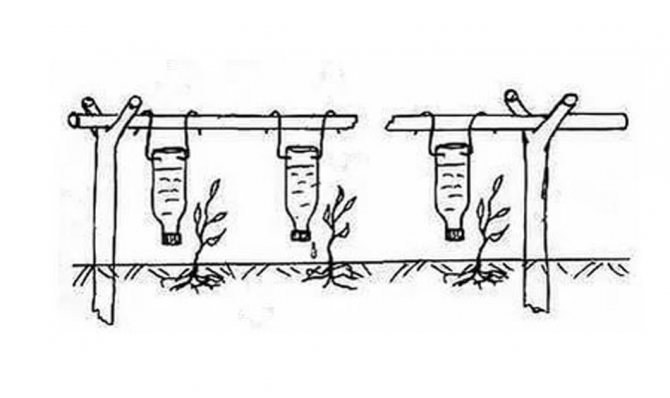

To avoid sunburn, the bottles are hung closer to the ground.
If gardeners cannot often visit garden plots, instead of two-liter bottles, you can use 5-liter plastic containers from under the water. The period of autonomous irrigation in this variant will increase for a longer period.
Compared with the traditional drip irrigation method with the device of containers, pipes, filters, etc., the bottle irrigation method has both advantages and a number of disadvantages.
Table: advantages and disadvantages of bottle watering
| Benefits | disadvantages |
| Affordable and cheap source material. | It is difficult to build a bottle irrigation system for large areas outdoors. |
| Simple procedure for setting up the system. | Often clogged holes with soil when using the system on heavy, clayey soils |
| Minimum expenditure of effort and time during operation: I filled the bottles with water and the process started. | Bottle irrigation cannot replace complete irrigation. It is necessary to additionally apply traditional watering with a watering can. |
| Bottled water warms up well in the sun. | |
| Easily replaceable system parts. | |
| Great for use in greenhouses. |
Video: bottle irrigation made easy
Testimonials
Maria, Samara region:
We independently made a drip irrigation system at our summer cottage. This is not difficult. Used an old barrel and unnecessary hoses. Now caring for the beds has become much easier. No need to carry heavy buckets. It is enough just to open the tap and the liquid itself flows to the plants.
Stepan, Lipetsk region:
To make it easier to care for the cucumbers, I made drip irrigation from old plastic bottles. This is, of course, not an entirely automated system. The containers still have to be filled manually. But it eliminates the need to go to the country every day. The liquid in the bottles is enough for several days. Therefore, I fill in an additional portion on harvest days.
The drip irrigation system greatly simplifies the care of cucumber plantings. With its help, it is possible to reduce the consumption of liquid, free up the vegetable grower's time for other work. The simplest drip design can be built independently from hoses, medical droppers and an old barrel.
Growing cucumbers without watering
Cucumbers are very hygrophilous and with a lack of watering they grow bitter and ugly, the yield drops very much. But what if there is no water near the plantings, and there is no way to deliver it for irrigation? Using the following agrotechnical techniques, you can grow cucumbers without watering in central Russia.
- The selected site should be with a high (up to 0.5–0.8 m) occurrence of groundwater with loamy or clayey soil.
- The land is prepared in the fall - they dig up and carry out work for snow retention: they install wind protection barriers from sheets of plywood, slate, arrange snow banks along the border of the site. The most reliable way is to use a special snow-retaining polymer film on the posts (the pros are compact, easily rearranged, and resistant to strong gusts of wind).
- Prepare a place for planting (the beds should be level with the ground or a little deeper so that rainwater collects): the top layer is loosened, covered with an opaque material (film, roofing felt, roofing material).
The work of weeding and loosening is eliminated, the need for watering is sharply reduced, since the film accumulates moisture well.
- Holes are made for planting seeds (they should not be larger than the thickness of the cucumber stem).
- Dry seeds are sown to a depth of 1–2 cm.
Further care will be to remove weeds that have sprouted in the hole next to the cucumber lash. There will be enough heat and moisture for plant roots until the end of the growing season.
Video: cucumbers under a film without watering and weeding
The method of growing cucumbers without watering can be recommended only in the most extreme case, when it is really impossible to ensure the possibility of normal irrigation of the crop - after all, cucumbers love water very much.
Sprinkling
Cucumbers require moisture both for the roots and for the aboveground part. Large leaves of the plant evaporate water intensively. To replenish moisture in the leaves and stems, sprinkler irrigation is carried out. In this case, watering cans, hoses with a spray nozzle, and various kinds of sprinklers are used. However, it must be borne in mind that sprinkling can be used when the cucumbers are completely healthy. If you suspect symptoms of a disease with powdery mildew, spotting or anthracosis, the method of sprinkling irrigation should be immediately excluded and go to drip irrigation.
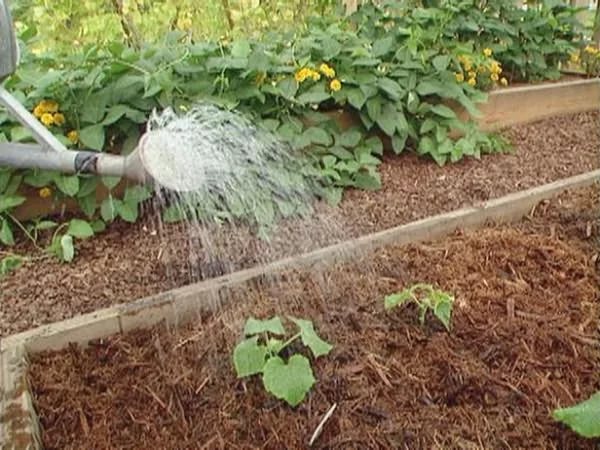

The leaves and stems of cucumbers will respond gratefully to outside root watering
Proper irrigation of a moisture-loving crop such as cucumber requires knowledge and practical experience. Having become familiar with the various methods of watering and applying them to growing this wonderful vegetable, the gardener will always have a harvest.

